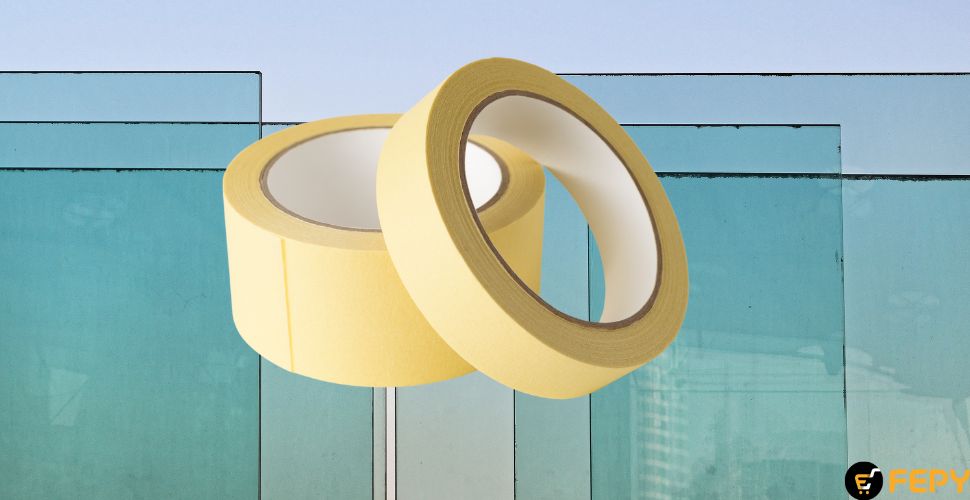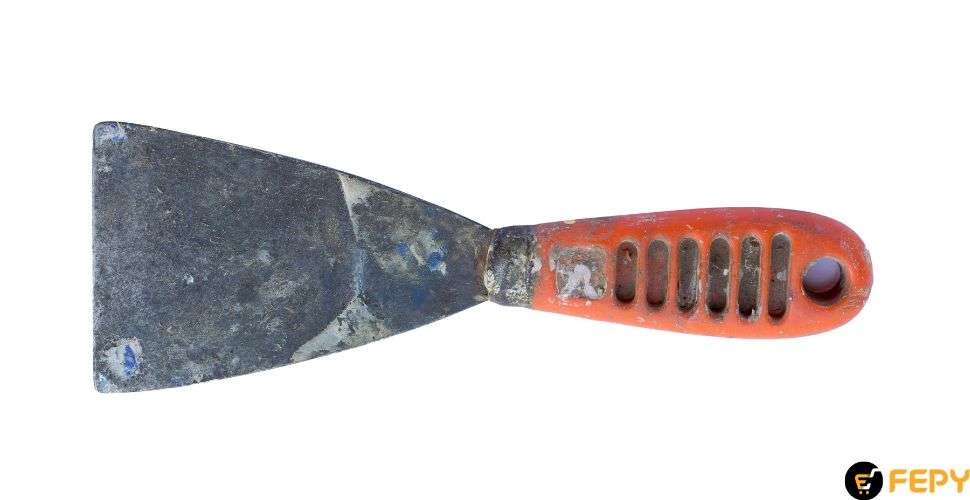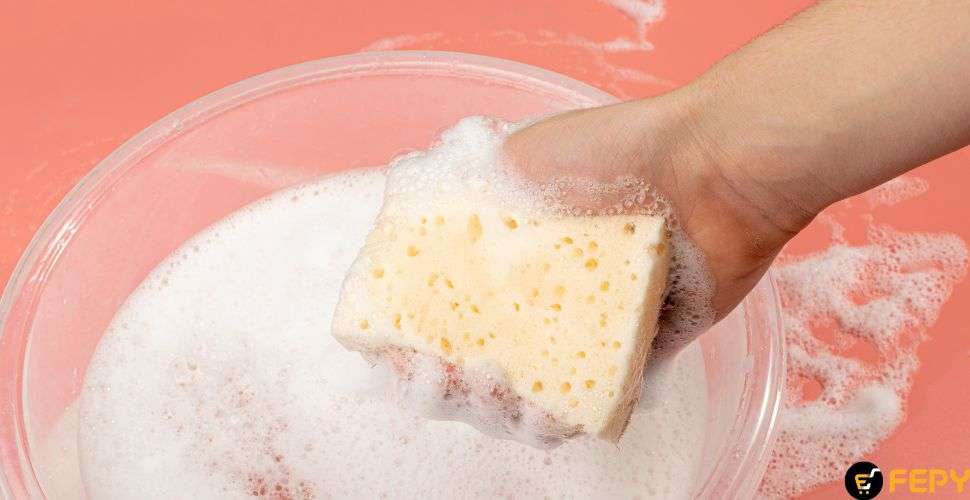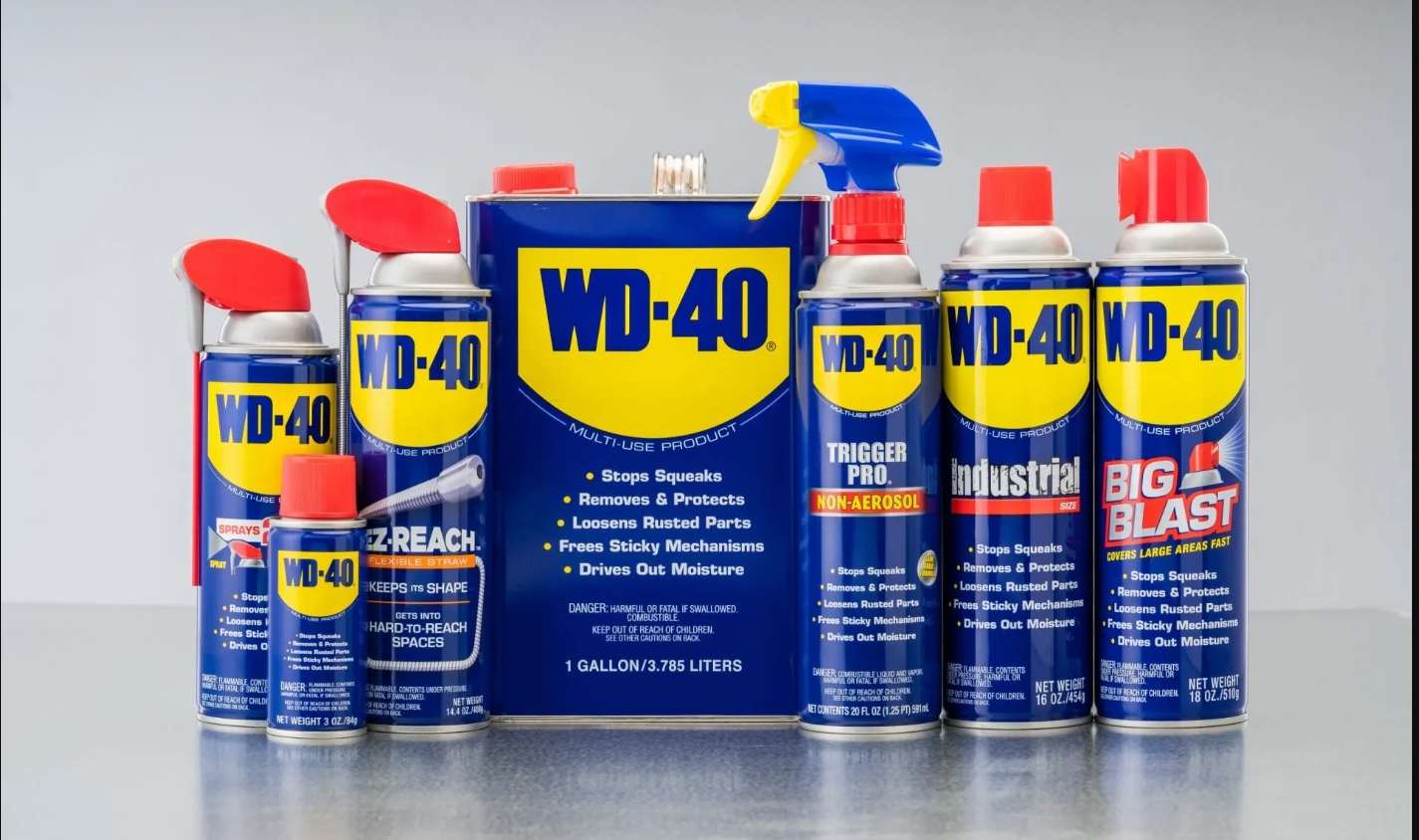How To Remove Masking Tape Residue from Glass

Masking tape is often a favourite choice, whether it's large-sized construction projects or your DIY projects. But its ease of use usually comes with a sticky price tag – the stubborn residue that clings to glass long after the tape is gone. So, is there a solution to get rid of masking tape residue? Yes, there are. This guide unveils nine simple solutions to remove masking tape residue from glass.
How To Remove Masking Tape Residue from Glass: 9 Simple Solutions
- Test Before the Use
- Go for Quick, Firm Rip Pulls
- Scraping Away with Putty Knife
- Cleaning with Warm Soapy Water
- Using Natural Citrus Power
- A Natural Solution of Vinegar
- Heating Up to Cleaning Up
- Rubbing Alcohol to the Rescue
- Expert Removal with WD-40
1. Test Before the Use
Masking tape is generally gentle on glass. However, there's a slight risk depending on the glass type and the cleaning solution you choose. To play it safe, we recommend a patch test.
Find a discreet area on the glass away from the central residue and apply a dab of your chosen cleaning solution (such as vinegar, baking soda, or something else we'll explore later).
Leave it for a minute or two, then gently wipe it clean. If the glass looks flawless, you're good to tackle the residue.
This step is crucial, especially for anything with a high gloss finish. Harsh chemicals in some removers can leave these surfaces dull or discoloured. So, a quick preventative test can save you grief later.
2. Go for Quick, Firm Rip Pulls
Masking tape is still tacky, but there is a tip for using it. Think of it like removing a Band-Aid. A slow peel stretches the adhesive, leaving more residue behind. But a quick, firm rip pulls the tape off cleanly.
While not foolproof for every situation, this can be a lifesaver for fresh masking tape. Just be gentle – if the tape has been on for days and feels dried out, take your time to avoid damaging the glass or surrounding area.
Prolonged exposure can strengthen the adhesive, so patience goes a long way.
3. Scraping Away with Putty Knife

A putty knife can be your secret weapon for small patches of stubborn residue. But caution is critical here.
Hold the putty knife flat and gently scrape the residue from the glass surface. Avoid applying too much pressure, as this can scratch the glass.
You can also use a straight blade to scrape hard stone and mirrored surfaces. A light touch is essential to prevent unwanted marks on your beautiful glass.
4. Cleaning with Warm Soapy Water

The most straightforward solutions can sometimes be the most effective because they are the most straightforward. This method easily removes masking tape residue from different surfaces, including glass.
The key here is warmth. Hot water loosens the adhesive, making it easier to remove. Fill a bucket or basin with warm water and add a generous squirt of dish soap. After wiping away the residue with the solution, you can use a soft sponge or a microfiber cloth to wipe it away.
When it comes to stubborn patches, let the soapy solution sit for a few minutes before lightly scrubbing the area.
This gentle yet powerful method will leave your glass clean and free of sticky tape marks.
5. Using Natural Citrus Power
For a natural cleaning option that is safe for glass, consider the power of citrus.
Citrus oils, like those in lemons, oranges, and grapefruits, are natural degreasers that break down adhesive residue.
Cut a fresh citrus fruit in half, and rub the juicy side directly on the residue. Let the citrus sit for a few minutes, then buff away the residue with a soft cloth.
This method is effective, and the fresh citrus scent is a bonus. Remember, this is gentler and may need to tackle more stubborn residue. If citrus fails, you can move on to another method.
6. A Natural Solution of Vinegar

Vinegar is a common household item, and it can be a surprisingly effective solution for removing masking tape residue from glass.
The mild acidity in vinegar helps dissolve the adhesive, making it easier to wipe away. Vinegar is a natural disinfectant, leaving your glass surfaces clean and germ-free.
To use this method:
- Mix equal parts white vinegar and water in a spray bottle.
- Spritz the solution onto the affected area and let it sit for a few minutes.
- Wipe away the residue with a soft cloth.
For stubborn patches, you can scrub gently with a non-abrasive sponge. Once the residue is gone, buff the glass with a dry microfiber cloth for a sparkling finish.
Always test vinegar in a small, inconspicuous area first to ensure it doesn't affect the glass. It is a great, natural, readily available solution for most households!
7. Heating Up to Cleaning Up
For truly tenacious residue, a little heat can be your best friend. In the same way that warm, soapy water softens the adhesive, applying heat to it can melt it, making it easy to remove.
Your trusty hairdryer is the perfect tool for this job. Hold it a few inches from the glass surface and turn it on low or medium heat.
It is essential to keep the hairdryer moving to avoid overheating one area. After a minute or two, the residue should soften.
While the tape is warm and pliable, use a soft cloth or plastic putty knife (to prevent scratches) to gently nudge the residue away.
While doing this, use safety precautions. Scraping a hardened adhesive is harder than scraping a soft surface. Let the surface cool entirely before scraping. Also, avoid using a heat gun or blow torch.
These tools reach incredibly high temperatures that may damage the glass. A hairdryer is more than enough for the job.
8. Rubbing Alcohol to the Rescue
Rubbing alcohol can be a powerful solution for particularly stubborn masking tape residue. There is a science behind it.
Alcohol acts as a desolvent, weakening the adhesive bond and making it easier to remove residue.
While generally safe for glass, a little caution is necessary. First, test a small, inconspicuous area to ensure the Alcohol doesn't affect the glass's transparency or finish. Then, dampen a soft cloth with rubbing Alcohol and dab it gently on the residue.
You can also let the Alcohol sit for a minute or two before wiping it away. If rubbing Alcohol proves effective, that's great! However, be aware that some painted surfaces can be sensitive to Alcohol.
Suppose you need clarification about the paint on your window frames or surrounding areas. In that case, choose a different method to avoid damage.
Acetone or nail polish remover can also be effective. Remember to use these even harsher substances than rubbing alcohol only as a last resort after proper testing on a hidden area first. Remember, safety always comes first!
9. Expert Removal with WD-40

If you are having trouble dealing with stubborn residues, you can strategically use WD-40. If not used correctly, WD-40 can leave an oily film.
Grab a textured rag, like a terry cloth towel, and apply a small amount of WD-40. Gently scrub the residue with the dampened rag.
For larger areas, spray WD-40 directly and let it sit for a minute before scrubbing.
Take essential precautions. As WD-40 contains petroleum, don't use it on oil-sensitive surfaces like painted surfaces or plastics.
Once the residue is gone, thoroughly clean the glass surface with warm, soapy water to remove any leftover WD-40.
Dry completely before applying new tape or adhesives. While WD-40 can be effective, a little caution goes a long way!
How to Prevent Masking Tape Residue?
Let’s discuss prevention with the tools you need to remove masking tape residue.
Understanding how tape adheres and how surfaces play a role is critical.
While tempting for a quick drywall fix, duct tape can leave a trail of future residue woes. Gaffer's tape, known for its low-residue properties, comes at a higher price.
Researching the suitable tape for the job can save you time and frustration in the long run.
Here are some golden rules to prevent masking tape residue:
I. Cleanliness is King:
Before applying tape, always wipe your surface thoroughly with a damp cloth.
Dirt, grease, dust, and even leftover paint can all affect how well the tape adheres, increasing the likelihood of residue when it is removed.
A clean surface not only helps prevent residue but also ensures the tape adheres appropriately in the first place.
II. Fresh is Best:
Old masking tape can dry out and leave more residue.
For the best results, use fresh tape whenever possible.
Removing old tape residue and cleaning the surface before applying new tape can also help minimize build-up.
III. Specialty Solutions:
A specialty tape leaves little or no residue. If you frequently battle residue issues, consider investing in a higher-quality tape that gets the job done right the first time.
While the upfront cost might be higher, remember the time and effort saved by avoiding a sticky cleanup later.
FAQs
Q. Can I use the above methods to remove masking tape residue from other surfaces besides glass?
Test first! But soapy water, rubbing Alcohol (with caution), and vinegar (with caution) usually work on plastics, metals, and glass.
Q. How long should I leave the cleaning solution on the residue before wiping it away?
A few minutes usually does it. For harsh residue, try 10 minutes, then scrape gently with a plastic putty knife.
Q. Is there a way to remove masking tape residue without any harsh chemicals?
For fresh tape, a quick rip might do the trick. Citrus fruits are also natural allies. Rub the juicy side on the residue, let it sit, and buff away.
Q. I tried everything, and the residue won't budge! What are my options?
If nothing works, consider a commercial product like WD-40, designed for rigid adhesives. Choose one that is safe for your surface and follow the instructions carefully.
Final Words
With these nine solutions and preventative measures in your arsenal, you've conquered the challenge of masking tape residue. No more sticky surprises, just sparkling clean glass surfaces.
Feeling inspired to tackle your next project? Visit the FEPY today, your one-stop shop for all things construction, from top-quality tools and materials to a wide variety of tapes designed for specific needs.
FEPY is the UAE's leading e-commerce platform for construction materials.
FEPY also offers all types of tapes, such as Brown Tape, Filament Tape, Clear Tape, Masking Tape, and Duct Tape.
So, what are you waiting for? Visit FEPY's online store today and unlock your creative potential!




